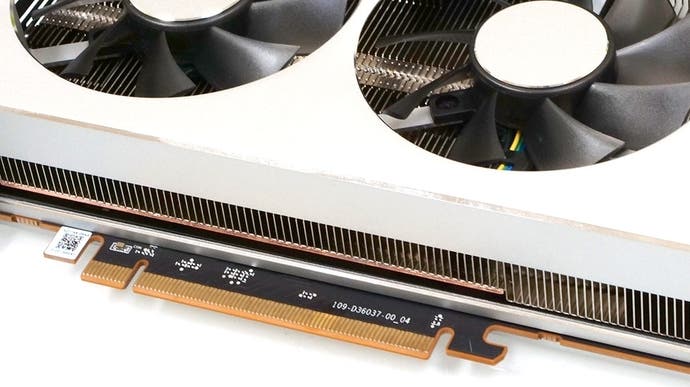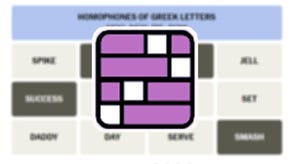Radeon 7 vs Vega 64 and Vega 56: is AMD's new card worth the upgrade?
AMD's top three graphics cards compared.
When the Radeon 7 was first announced in January 2019, AMD promised the new card would be a significant step up over their previous flagship card, the Vega 64. Team Red suggested that most games would run at 25 to 40 per cent faster on the Radeon 7, even at 4K resolution and max settings. That's a bold claim, and now that the Radeon 7 has officially been released we can put it to the test.
We have already covered how AMD's new top card compares to the Nvidia GPUs in our Radeon 7 vs RTX 2080 and Radeon 7 vs RTX 2080 Ti articles, so now it's time to see how the Radeon 7 stacks up against the previous AMD performance champions: the Vega 56 and Vega 64. If you're already running one of these cards and want to see how much of a performance boost you'd get for your $700/£600 investment, this is the article for you.
Thinking about upgrading your gaming PC? Take a look at our recommendations for the best graphics cards on the market. Pairing your graphics card with one of the best gaming monitors is also important, so check out our latest picks!
Our greatest focus will be showing how the Radeon 7 compares to its Vega forebears in a gamut of recent AAA games. We'll also look at the few feature differences between the first and second-generation Vega cards and show how much you could expect to pay for the Radeon 7. Let's move quickly through the features, then move onto the performance benchmarks and pricing.

Radeon 7 vs Vega 64 and Vega 56: feature comparison
Although the Radeon 7 is a new card made using an advanced 7nm manufacturing process, it doesn't offer any substantial feature additions over the first-generation Vega 56 and Vega 64 GPUs. You'll get the same ReLive software for streaming or recording video, Eyefinity for creating multi-monitor gaming setups and the AMD Link app for controlling your graphics card remotely. AMD's excellent WattMan software returns as well, with the ability to overclock your card, adjust power usage and enable various features. Finally, both cards will work well with FreeSync monitors, which can smooth out uneven frame-rates without introducing the input lag that can make traditional v-sync such a pain.
While it isn't a feature per se, the Radeon 7 does have significantly more VRAM than its predecessor - 16GB versus 8GB. The greater capacity may make a difference to gaming performance in some titles, but it could have a greater effect on creative workloads. For example, editing 4K or 8K footage in Adobe Premiere can use upwards of 10GB of video memory, so having 16GB on tap could speed up workflows significantly. That makes the Radeon 7 a better choice for content creators than the mere improvement in compute power would suggest.
Radeon 7 vs Vega 64 and Vega 56: game benchmarks
So: how much faster is the Radeon 7 than the Vega 56 and Vega 64? We are going to answer that question by looking at ten recent games at the full range of resolutions: 1920 x 1080 (1080p), 2560 x 1440 (1440p) and 3840 x 2160 (4K). No matter which monitor you have on your desk, you should get a good idea of the performance you can expect with one of these cards in your system - as long as the rest of your setup is up to par.
Note that while we are including 1080p benchmark results for completeness, we do not recommend using the Radeon 7 or similarly powerful hardware at this resolution. We ran into CPU bottlenecking in many tests, even with a powerful test rig with a water-cooled and overclocked Core i7-8700K processor, indicating that we are leaving GPU power on the table. CPU bottlenecks can also result in greater run-to-run variance in our results. In general, we recommending using a high-end Core i7 or Ryzen 7 processor if you are targeting high refresh rates at 1080p or 1440p.
To give you a better idea of these cards' raw performance, you can also see a selection of their specifications in the table below. All three AMD cards are so-called reference models that operate at stock speeds, while the RTX 2080 FE we're using as a point of comparison does come with a healthy factory overclock. That means entry-level RTX 2080 cards will perform slightly worse than our results indicate.
| Radeon 7 | RX Vega 64 | RX Vega 56 | RTX 2080 FE | |
|---|---|---|---|---|
| Manufacturing process | 7nm | 14nm | 14nm | 12nm |
| GPU cores | 3840 | 4096 | 3584 | 2944 |
| VRAM | 16GB HBM2 | 8GB HBM2 | 8GB HBM2 | 8GB GDDR6 |
| Memory bandwidth | 1024GB/s | 484GB/s | 410GB/s | 448GB/s |
| Base clock | 1400MHz | 1200MHz | 1138MHz | 1515MHz |
| Boost clock | 1800MHz | 1536MHz | 1474MHz | 1800MHz |
| TDP | 300W | 295W | 210W | 225W |
| RRP | $700/£650 | $600/£560 | $500/£460 | $800/£750 |
Our testing results are shown using a unique Digital Foundry benchmarking system - as long as you're viewing the desktop version of this page, anyway. A YouTube video will show you the scene that we tested each card on, with live frame-rate and frame time data embedded below. The advantage of this added complexity is that you can use the controls to the right of the video to add or remove different cards and resolutions.
Below the real-time telemetry, you can find quick summaries for the entire run, including the handy lowest one per cent and lowest five per cent figures which give you an idea of each card's worst-case performance and overall stability. It's worth remembering that to see these different figures, you need to mouse over the image. You can also click the chart to toggle between absolute figures and percentages.
Without further ado, let's get into the benchmarks!
Assassin's Creed Odyssey
We begin with Assassin's Creed Odyssey, which was released in late 2018. The Radeon 7 is 22 per cent faster than the Vega 56 and 13 per cent faster than the Vega 64 in this first test at 1080p with the latest AMD drivers installed - beforehand, the gap was closer to 40 per cent. It is often interesting to see how these percentages change as resolution is adjusted, and we do see those numbers shift at 4K: the Radeon 7 leads the Vega 56 by 38 per cent and the Vega 64 by 28 per cent. Meanwhile, the RTX 2080 remains the overall winner in this game at all resolutions.
AC Odyssey: Ultra High, TAA
Assassin's Creed Unity
Assassin's Creed Unity includes a tough depth of field effect that has a tremendous impact on Vega performance, and sadly that bugbear hasn't been shaken off with the Radeon 7. All three cards exhibit the issue, with frame-rates dropping to the low thirties on the older Vega cards and the high thirties on the Radeon 7 at 1080p. Regardless, the new AMD card does manage to carve out a 27 percent lead over the Vega 64 at the lower resolutions and 33 per cent at 4K.
AC Unity: Ultra High, FXAA
Battlefield 1
Battlefield 1 is the best showing for the Radeon 7, and the first time we see the Radeon 7 ahead of our factory-overclocked RTX 2080 at 177fps. The older Vega cards perform well in our roll through no man's land too, averaging 133fps and 144fps at 1080p. The advantage that the Radeon 7 has over the Vega 64 is 23 per cent, moving to around 35 per cent at 1440p and 4K. Still, all but the Vega 56 manage to deliver at least 60fps average at 4K.
Battlefield 1: Ultra, TAA
Crysis 3
More than half a decade after its release, Crysis 3 remains a famously difficult game to run at very high settings - particularly at 4K. The two Vega cards only manage just over 30fps at this resolution, delivering a console-quality feel to the proceedings, but the Radeon 7 does better to manage 49fps on average. That's again a 35 per cent advantage over the Vega 64 and 49 per cent over the Vega 56 - not a bad generational leap.
Crysis 3: very high, SMAA T2X
Far Cry 5
2018 release Far Cry 5 has one of the most chilled out integrated benchmarks we've ever seen, with calming music and a pretty Montana lake scene to look at. It's a little more stressful if you're a graphics card, with none of the cards in our comparison managing to average over 60fps at 4K. The Radeon 7 and RTX 2080 come closest, rounding up to 60fps on the dot, while the older Vega cards deliver 41fps and 46fps at this resolution.
Far Cry 5: Ultra, TAA
Far Cry Primal
Far Cry Primal is a rework of the Far Cry 4 map into something a little more rough and ready, a prehistoric take on the familiar open world formula. The game was released in 2016 but remains a challenging task for even the newly released Radeon 7. AMD's latest GPU does manage a comfortable 134fps at 1080p and 101fps at 1440p, but averages just under 60fps at 4K. That's 46 per cent faster than the Vega 56 and 35 per cent faster than the Vega 56, if you were wondering.
Far Cry Primal: Ultra, SMAA
Ghost Recon Wildlands
Ghost Recon Wildlands was released in 2017, but its punishing ultra preset means that it will be menacing graphics cards for years to come. None of the four graphics cards we're comparing today manage to even get close to 60fps at 4K, with the Radeon 7 and RTX 2080 sitting at 38fps and the older Vega cards at sub-30fps. Once again, the advantage the Radeon 7 has over the Vega 64 at 4K is around 29 per cent.
Ghost Recon Wildlands: Ultra, TAA
Rise of the Tomb Raider
Rise of the Tomb Raider's integrated benchmark is a nice way to test graphics hardware, even though it is a little easier to run than the full game. The Radeon 7 isclose behind the RTX 2080 here, with a 24 per cent advantage over the Vega 64 and a 31 per cent lead over the Vega 56. The numbers do oscillate up and down as we move from 1080p to higher resolutions, but the trend remains the same.
Rise of the Tomb Raider: Very High, SMAA
Shadow of the Tomb Raider
Our penultimate game to test is Shadow of the Tomb Raider, which comes with a longer and more realistic benchmark. The Vega 56 and Vega 64 show their age here, managing not more than 30fps at 4K, while the Radeon 7 ties the RTX 2080 at 46fps at the same resolution. The gap from the Vega 64 to the Radeon 7 is about 32 per cent.
Shadow of the Tomb Raider DX12: Highest, TAA
The Witcher 3
Our last unique game is one of the best to be released in 2015, The Witcher 3. Our horseback ride through Novigrad reveals a 28 per cent lead for the Radeon 7 over the Vega 64 at 1080p, growing to 33 per cent at 1440p and 36 per cent at 4K. The Radeon 7 and RTX 2080 are very closely matched at 4K, with both cards getting within a few frames of 60fps, while the Vega cards are in the low 40s.
The Witcher 3: Ultra, POST-AA, No Hairworks
Cross-generational comparison
We'll conclude with a look at how the Radeon 7 compares to past AMD graphics cards, all the way up to the R9 Fury X. You can see that the Radeon 7 pulls out one of the biggest inter-generational leads we've ever seen, with a 27 per cent gap over the outgoing Vega 64 at 1080p and 28 per cent at 1440p. Overall, it's a strong statement from AMD - and with Navi rumoured to be on the horizon for a potential launch this year, we may yet see even greater leaps from the American company.
Assassin's Creed Unity: Ultra High, FXAA
Radeon 7 vs Vega 64 and Vega 56: price and availability
The Radeon 7 is offered with three free games when purchased from select vendors: The Division 2, Resident Evil 2 and Devil May Cry 5. You'll get precisely the same games with the Vega 56 and Vega 64 when buying from participating retailers, so there's no difference here. However, the Radeon 7 is only being available in reference designs at present, while there are a few custom Vega 56 and Vega 64 cards. If having a particularly quiet setup is important to you, one of these custom designs could be worth waiting for.
So how much can you expect to pay for each card and how easy is it to find them? The Radeon 7 is the most expensive of the three, with an RRP of $700/£600, but worries surrounding availability haven't materialised since launch. The Vega 64 is the middle child, costing around $400/£310, and is relatively easy to find in most territories. Finally, the Vega 56 is the cheapest Vega card thus far, with entry-level models going for around $300/£250. Unfortunately, the Vega 56 is also the hardest to find at present, although the used market can be worth checking. If you snag a bargain, a Vega card can still be worthwhile - but the Radeon 7 offers significantly better performance. The RTX 2080 and other Nvidia cards are also worth considering if you're open to joining Team Green.
That concludes our comparison between the new Radeon 7 and AMD's last-generation Vega 56 and Vega 64 products. Want to learn more about the Radeon 7? We encourage you to check out our written Radeon 7 review or our Radeon 7 review video for a more detailed investigation into AMD's new top card.
Which GPUs are worth buying? We've made our picks for the best graphics cards available, updated with the latest graphics cards as they're released. As well as an overall performance champ, we name the best value graphics card and best cheap graphics card to guide your next upgrade.









